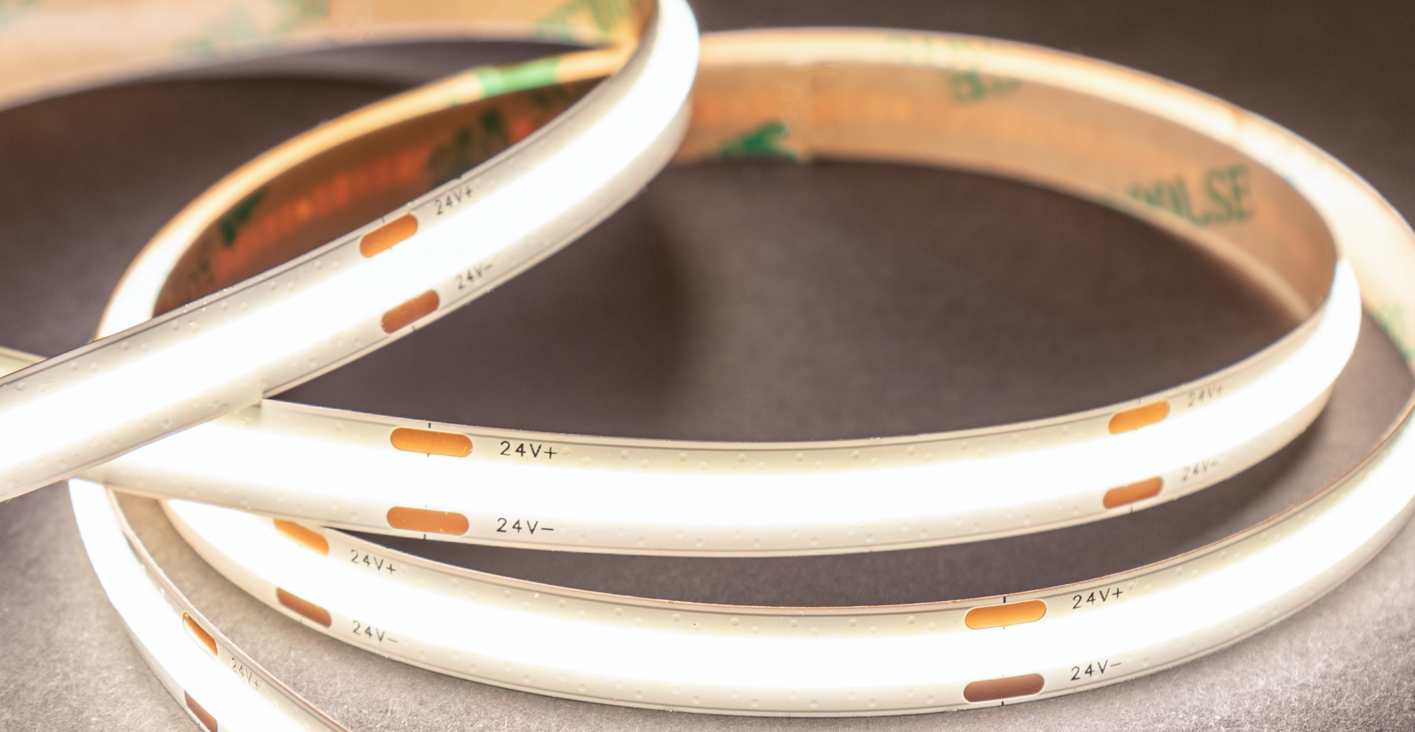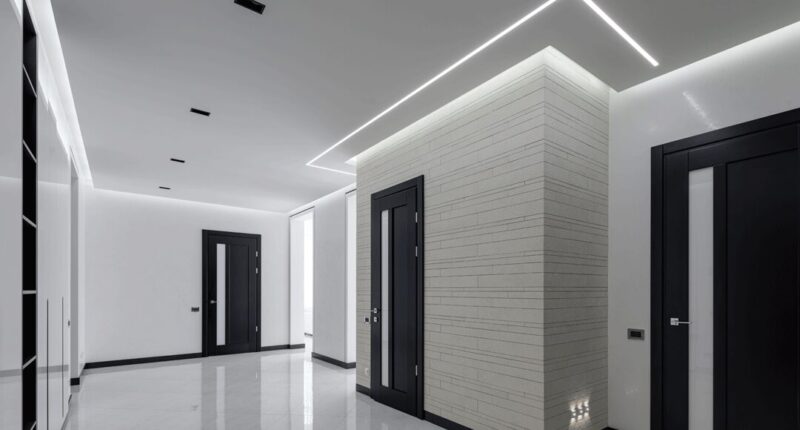COB (chip-on-board) LEDs have taken off as a lighting option due to some neat traits they have. The little light-making chips are all directly mounted onto a circuit board, which gives them unique strengths and weaknesses compared to standard LED strips.
However, keep in mind that choosing the right brand is the best solution to secure the proper LED Strip COB.
In this article, I’ll break down the main pros and cons of COB strips as well as how they might be used in different situations.
Let’s Start With the Advantages

Lots of Brightness in One Spot
COBs shine (no pun intended) when you need a lot of illumination from a single source. Because the chips are so tightly packed together on a circuit board, you get super powerful, evenly spread-out light from just one module.
That concentration of brightness makes COBs perfect anywhere you require high levels of light, like stage productions, stadium venues, or outdoor environments that need to stand out.
No doubt about it, if you want intensity of light without using a ton of individual LEDs spaced far apart, a COB strip will deliver that punch of brightness from a compact unit.
Keeping Those Chips Cool
Because the light-making chips are all crammed together neatly on a board, COBs have a real advantage when it comes to staying cool under pressure. Because the chips are so tight, the heat they create while working hard has less distance to travel before it can dissipate.
This efficient thermal management is a lifesaver where lots of brightness is packed into a small space and heat buildup would normally cause issues real fast. The ability to dissipate that heat generated when cranked up to 11 means the LEDs will last way longer without their performance fading due to overheating over time.
Small But Powerful Packaging

Even though they stuff a ton of light-making power into a compact module, COBs still take up way less space than lots of individual LEDs would. Having all those chips fused directly onto the circuit board substrate leads to a design that’s much more condensed than separate packaged LEDs.
That compactness opens up lighting possibilities where space is tight, like built-in architectural lights that need to fit into slender spaces or automotive applications with limited room for lighting elements. COBs prove that some of the best things come in small, power-packed packages! Their concentrated power-to-size ratio means big bright results even in constricted conditions.
Nice and Evenly Blended Colors
Having all those light-making little chips sit so cozily next to each other on the board turns out to have another perk beyond just light output – it makes any colors they emit blend beautifully. The close packing allows different wavelength colors to mix uniformly instead of appearing patchy or uneven.
That level of precise, consistent color rendering and distribution is golden anywhere color accuracy is crucial, like digital displays, or especially vibrant stage lighting where the palette really needs to pop flawlessly.
Less Eye Strain With A Softer Glow
While COB LEDs give you all that brightness bounty, they also shine when it comes to being easier on the eyes. Thanks to their tightly packed design with lots of chips to help distribute the light beam more widely, there’s noticeably less harsh glare bouncing around. Instead, you get a softer, gentler radiance that never makes eyes feel fatigued.
Any place where comfort matters, from retail spaces to work environments, will appreciate the strain-free lighting COBs provide.
But There Could Be Some Downsides

Paying a Little More Up Front
It’s no secret that COBs have a steeper price tag starting compared to basic LEDs. The extra steps needed to painstakingly build their unique board design push those costs higher at purchase. But look at it like most things – you get what you pay for!
While the premium may pinch pockets more initially, the increased brightness, efficiency, and lifespan justify it. And as the tech grows more popular and factories streamline production, that premium is steadily shrinking too.
Not Easy To Direct
While COBs are champions of spreading their radiance widely, that can sometimes backfire if you need that illumination laser targeted with pinpoint control.
Since they disperse their dazzling output across a broad angle right from the source, it takes some extra finessing like optical modifiers or reflectors to shape and aim their natural generous glow into a concentrated, focused pathway instead of its native flood zone.
If your lighting scenario requires channeling a lot of light with a sharp aim like a spotlight, that diffused default may not serve without supplemental beam sculpting.
Reduced Efficiency

While COBs excel with heat dissemination, their intensely consolidated design does come with a tiny efficiency penalty compared to regular lone LEDs. With all those chips compressed together in one hot spot, some light energy is lost in transference that further separated LEDs can avoid.
But let’s be real – we’re talking a very slight reduction here. COB technology has still progressed tremendously in squeezing incredible performance out of minimal electricity.
More Frustration When Things Break
While their tightly packed structure serves COBs well in maxing out light and minimizing footprint, it also means repairing damage is decidedly less convenient than with basic LED strips.
When something goes wrong with a COB module -say a chip fails- prying it open to swap just that single part isn’t possible like it is with standalone LEDs.
Due to how intertwined all the components are fused, a mishap likely spells replacing the whole unit instead of a quick fix.
Last Words
After looking at all the pros and cons side by side, it’s clear that COBs have carved out an impressive place for themselves in the lighting world. Their talent for packing fireworks-worthy illumination into a pocket-sized package while keeping their cool makes them undeniably useful for a range of applications.
At the end of the day though, like most things that produce jaw-dropping results, they aren’t without their compromises. Buyers must look hard at needs – do cons like repair difficulties or capped reconfigurability outweigh the benefits of intensity and integration?




